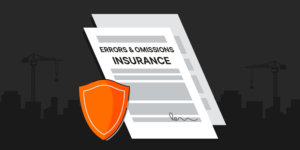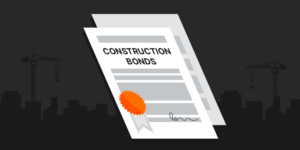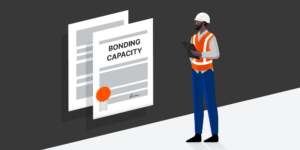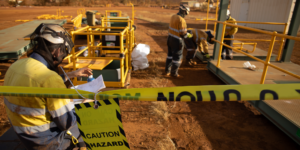Risk Management
Learn from experts about mitigating risks in construction through safety, insurance, and surety bonds. Protect your business by establishing a solid portfolio of risk management strategies.
The Basics | Insurance | Surety Bonds | Safety | Recent Articles
Basics of Construction Risk Management
Risk management in construction involves identifying and mitigating potential loss events that businesses face. Due to the high-risk nature of the industry, risk management professionals are responsible for implementing practices that help protect their business.
Whether obtaining insurance, securing surety bond coverage, or helping to implement safety protocols on construction sites, risk managers must be aware of the factors that may impact their company’s exposure and affect their bottom line.

Construction Risk Management: 5 Steps to Reduce & Mitigate Risk
Construction is a risky industry, with one of the highest...

10 Common Construction Risks for Contractors & Owners
Construction is a tough, often volatile industry, with one of...

How to Minimize Risk on Government Construction Projects
From the bidding process to regulatory requirements to payment processes,...

Construction Insurance: 9 Types of Policies Contractors Need to Know
Construction is a risky business. Everyone who works on a...
Insurance
Explore different types of insurance coverages, policy documents and protections offered for construction businesses.

A Contractor’s Guide to Builder’s Risk Insurance
Any party with a vested interest in new construction or...

CCIP & OCIP: A Guide to Controlled Insurance Programs in Construction
Each contractor and party on a construction project has their...

Errors and Omissions (E&O) Insurance Explained for Construction
Errors and omissions (E&O) insurance covers contractors against financial loss...
Surety Bonds
Learn the ins and outs of how surety bonds can help risk management professionals prevent loss on construction projects.

A Contractor’s Guide to Construction Bonds
Many construction projects today require that contractors provide bonds. A...

Performance Bonds for Construction Explained
Performance bonds provide a guarantee that a contractor will fulfill...

Contractor Bonds vs. Insurance: What to Know
As a contractor, it’s important to have the right protections...

Little Miller Acts: Bond Requirements on State Construction Projects
For general contractors who commonly work on government projects, obtaining...
Safety
Build out your understanding of safety protocols and hazards to ensure all parties and equipment are protected on your construction sites.

Top OSHA Violations in Construction (2021)
To those on the jobsite day-to-day, it’s no surprise that...

Top 8 Construction Health and Safety Hazards
In the construction industry, a lot can go wrong with...

7 Ways to Improve Construction Site Safety
Construction is a risky business by almost any measure: It...

36 Construction Safety Statistics for 2023
Worker safety is consistently one of the top priorities on...

12 Safety Organizations for the Construction Industry
With the high risk of fatal incidents and worker injuries...

Performing a Job Safety Analysis (JSA) in Construction
On the jobsite, safety is a contractor’s number one priority....

What Does a Construction Safety Manager Do?
Construction sites require strict adherence to safety protocols, as a...
Recent Articles

Successfully Navigating Construction Lien Waivers
Getting paid can be one of the greatest challenges in...

Jobsite Security: Assessing and Minimizing Construction Site Risks
Assessing security needs for a construction site early can save...

Construction Underwriting: Assessing & Understanding Risk
When companies apply for construction insurance, construction underwriters are tasked...

Subcontractor Default Insurance: SDI Policies Explained
Subcontractor default insurance (SDI) is a risk mitigation tool for...

The Contractor’s Guide to Increasing Bonding Capacity
Contractors who want to work on bonded construction projects will...

How to Prevent Mechanics Liens on Any Construction Project
In construction, when a contractor or supplier is unpaid, they...

Creating a Culture of Safety in Construction
In construction, a positive safety culture impacts a company’s productivity,...

Construction Liens Explained: How Unpaid Contractors Recover Payment
In construction, there are many forms of recourse available to...

Construction Safety Management: Building a System to Reduce Risk
Due to the high-risk nature of construction work, having a...

QC in Construction: How Builders Manage Quality Control
In construction, quality control (QC) refers to the procedures and...

Construction Reporting: Key Report Types & Best Practices
In the world of construction, reporting is not just a...

Construction Noise: How to Protect Workers & Reduce Noise Pollution
Construction is an inherently noisy activity, which can significantly impact...

